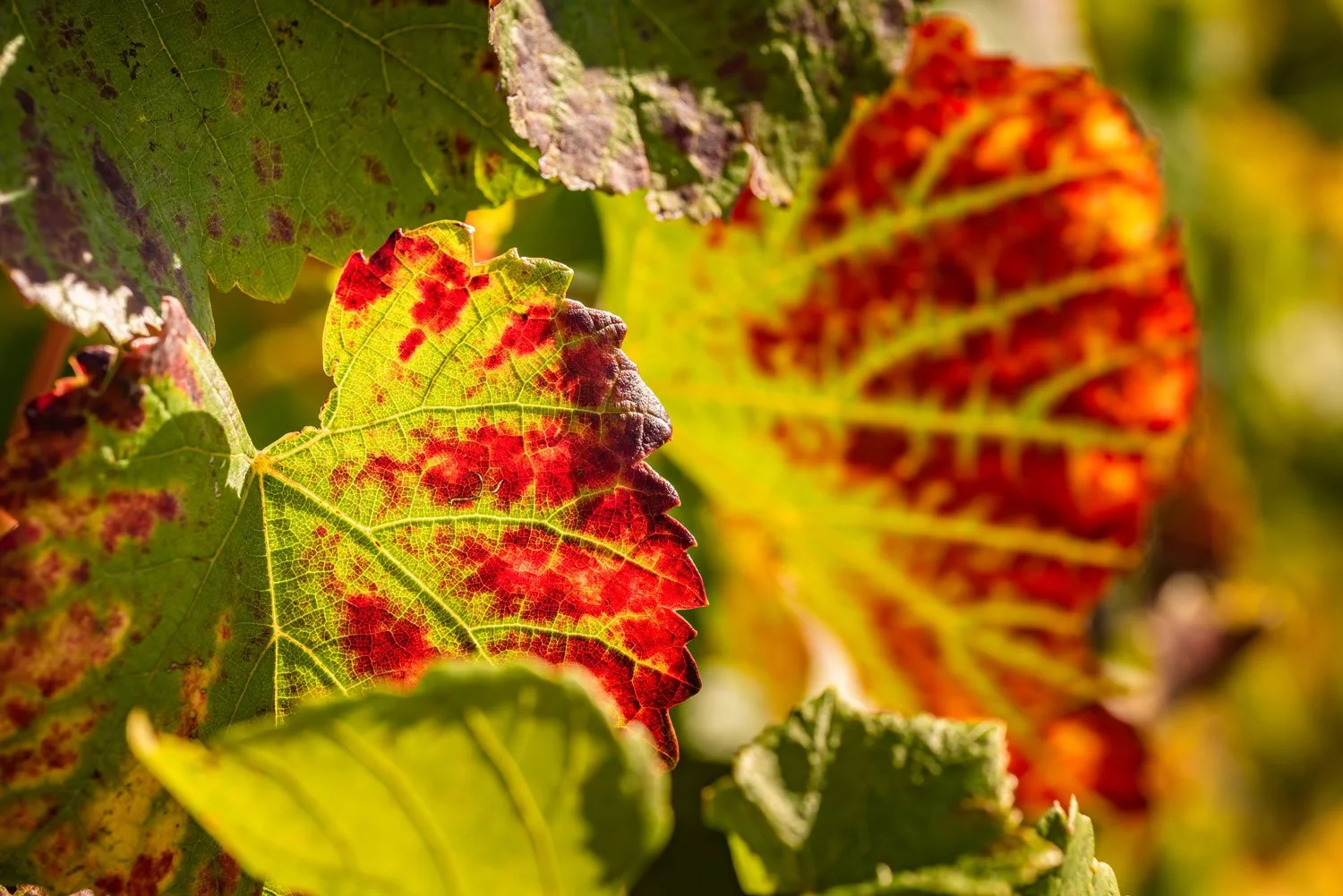Grapevine Red Blotch Virus: What Growers Need to Know
In 2008, Napa Valley growers began noticing unusual red leaf symptoms on red wine grape cultivars—symptoms that didn’t match any known red leaf diseases. After years of research, Grapevine Red Blotch Virus (GRBV) was officially identified in 2011.
Today, this emerging viral disease continues to challenge vineyards across the United States. With no known cure, the scientific community has rallied together to better understand and manage the virus. A multi-institutional research and extension program, supported by Cornell University, Fresno State, UC Berkeley, UC Davis, UC ANR, USDA-ARS, and the Robert-Jean De Vogüé Research Center at Moët Hennessy, has launched a $13 million initiative to drive cutting-edge research and deliver rapid, practical knowledge to growers, nurseries, laboratories, and wineries.
What to Look for on the Vine
GRBV symptoms typically appear in mid-summer, though timing can vary by cultivar and year.
Red-fruited cultivars: Look for red blotches that start at the leaf margin or within the leaf blade. Primary and secondary veins often turn red as well.
White-fruited cultivars: Symptoms appear as pale green to pale yellow patches on the leaves.
Symptoms usually begin on basal leaves and progress up the shoot. Some cultivars, like Chardonnay and Zinfandel, may show marginal burning similar to potassium deficiency, while in Malbec and Mourvèdre, entire leaves may turn red by harvest.
Early in the season, red blotch symptoms are distinct from Grapevine Leafroll Disease (GLD), though the two can appear similar later in fall. Unlike some grapevine viruses, GRBV does not kill vines, but it can significantly affect yield and fruit quality.
👉 Important: The only reliable way to confirm GRBV is through laboratory PCR testing.
The Effect of GRBV
Infected vineyards in the U.S. have reported:
Reduced yields and vine vigor
Premature leaf senescence
Lower sugar accumulation (1–5° Brix less)
Delayed fruit maturity
Altered color, flavor, and aroma due to changes in secondary metabolites
While the degree of impact varies among cultivars, total soluble solids are consistently reduced in juice from infected vines. Effects on pH and titratable acidity are variable.
How GRBV Spreads
The virus spreads both long-distance and short-distance, but not through mechanical means such as pruning tools or vineyard machinery.
Long-distance spread: Primarily through infected propagation material, including grafting or the use of infected nursery stock.
Short-distance spread: Associated with insect vectors, most notably the three-cornered alfalfa hopper (Spissistilus festinus), confirmed in 2016 as capable of transmitting GRBV.
Recent studies suggest that other insect species may also act as vectors, with regional specificity playing a role. For example, the leafhopper Scaphytopius graneticus has been identified as a potential vector in need of further study.
Infected vines typically appear randomly scattered throughout a vineyard, reflecting the behavior of winged adult hoppers that move unpredictably between vines—unlike the clustered spread typical of mealybugs and scale insects associated with leafroll viruses.
Management and Prevention
Currently, there is no cure or chemical control for GRBV. Prevention and proactive management are essential.
Best practices include:
Regular vineyard monitoring for virus-like symptoms and potential vectors.
Testing symptomatic vines via PCR rather than relying solely on visual diagnosis.
Rogueing (removal) of infected vines to prevent further spread—especially critical if vectors are active.
Vector management to reduce potential insect transmission.
Sourcing clean, certified planting material from reputable nurseries.
While rogueing can slow disease progression, its effectiveness depends on how efficiently local insect vectors spread the virus.
Looking Ahead
The collaborative research effort now underway represents a major step forward in combating Grapevine Red Blotch Virus. With the combined expertise of leading universities, federal agencies, and industry partners, the program’s focus on integrated management and rapid information sharing offers hope for improved vineyard resilience.
As the science evolves, growers are encouraged to stay informed, adopt preventative practices, and participate in extension workshops to ensure the health and productivity of their vineyards for seasons to come.

